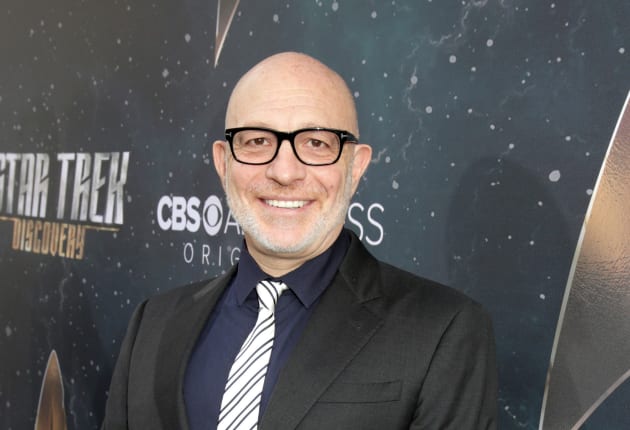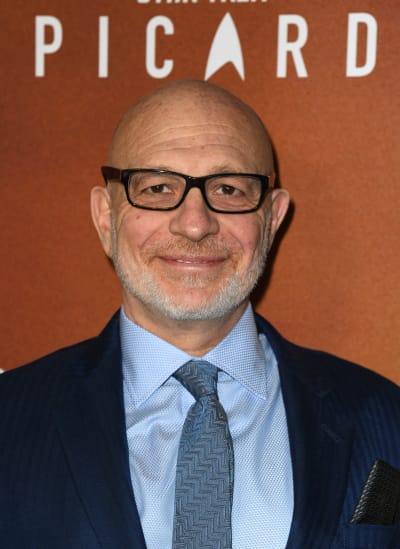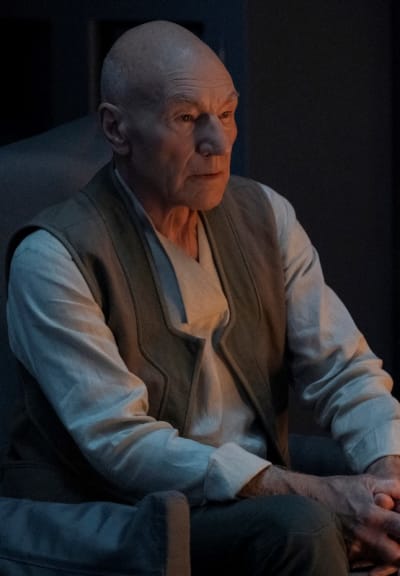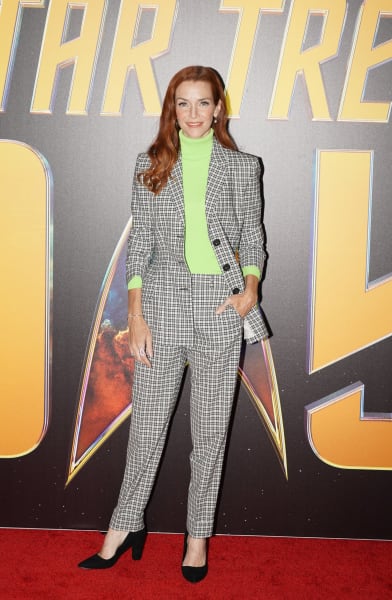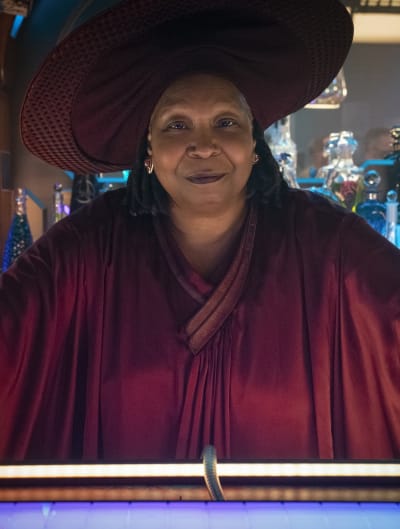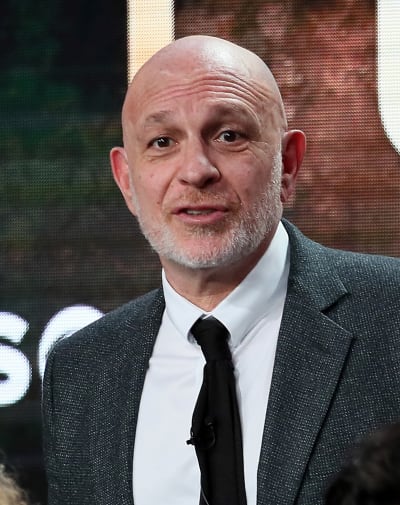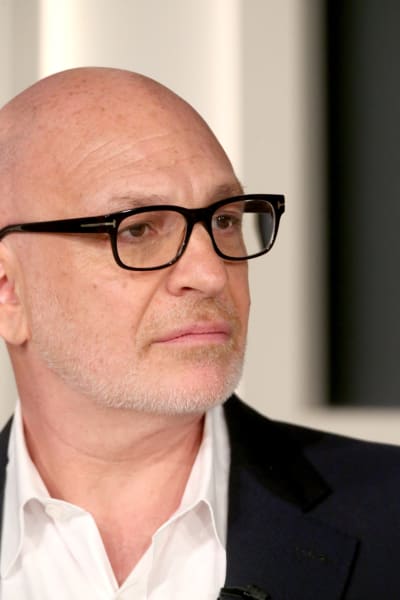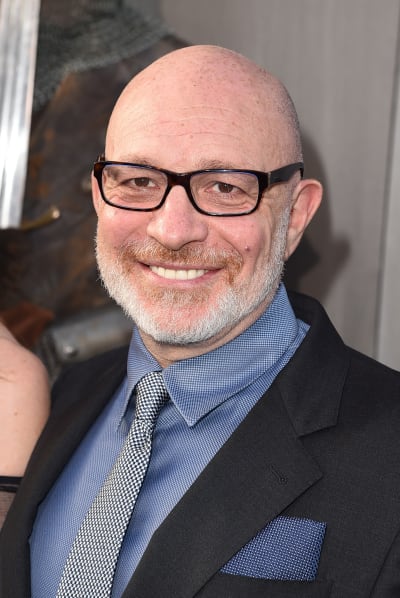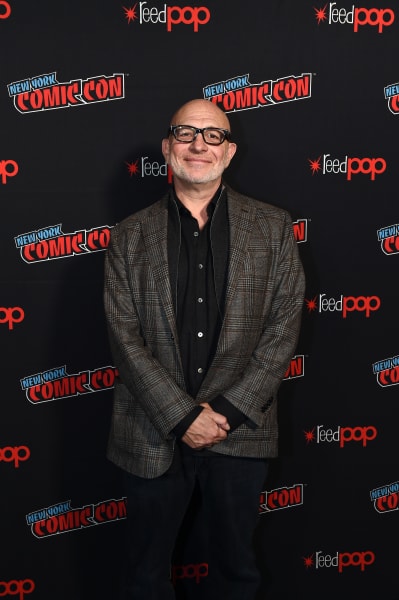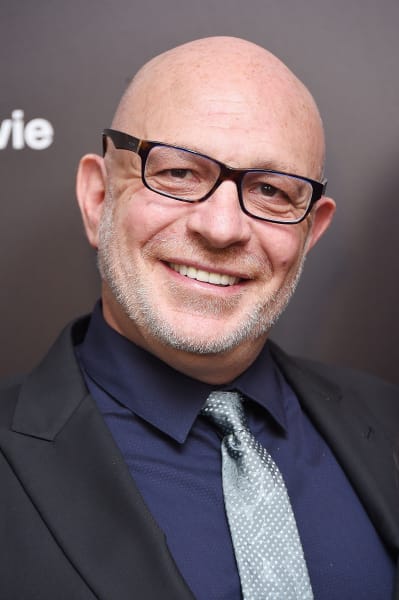Akiva Goldsman is perhaps best known as a talented and successful screenwriter with an Oscar for 2001’s A Beautiful Mind and a swath of major box office hits like The Da Vinci Code, and I am Legend.
Since 2009, his work as writer, director, and producer on an impressive catalog of television juggernaut series has garnered attention and acclaim.
Onboard with Alex Kurtzman’s vision of the new Star Trek on Paramount+ from the launch of Star Trek: Discovery in 2017, Goldsman has been involved with every live-action series in the franchise since and currently acts as co-showrunner on Star Trek: Picard Season 2.
Speaking with TV Fanatic and other outlets during a virtual press junket, Goldsman adeptly fielded questions regarding the transition from Star Trek: Picard Season 1, wherein Picard was saved from death through synth technology, effectively making him an android.
“It’s interesting because even in the turning of him to synthetic at the end of Season 1, we were pretty clear about it then that there’s nothing enhanced here.
“Fundamentally, [Picard was told,] ‘You are who you were. It’s just that you won’t die of this particular genetic misfortune that you carry with you.’
“And we really do play it that way. There are no super-secret, neat-o, cool things that Picard is capable of doing that are in any way tied to his new body.
“We did it to sort of make a resurrection arc, but we’re not pressing forward with the idea of this sort of the hybridization of Picard and synthetic.”
While multiple sources have established that Star Trek: Picard will end with its third season, and Goldsman confirms that plan, he doesn’t rule out the possibility of a continuation.
“The door is always open for a Season 4, but as of now, it is just three seasons. It was always planned to be three seasons.
“If some combination of CBS and Patrick and the world all said, ‘SEASON 4!’ I’m sure we would engage it – dare I say? – but no, currently it remains a three-season object.”
“There was kind of a thematic set of ideas for 2 and 3 but no real plan because we didn’t know whether we were going to get Seasons 2 or 3.
“Once Season 2 started up, then we were like, ‘Okay, this is working, and we’re probably going to get to the end.’
“But we were a show that would or wouldn’t work — like every show –, and so we didn’t really delve into anything concrete until it really felt like Season 1 had landed, and the show was going to be welcomed enough to get us to Season 2.”
The flames of anticipation for Season 2 were fanned to a roaring blaze by the announcement that John de Lancie and Whoopi Goldberg would reprise their roles as Q and Guinan, respectively.
The inclusion of Annie Wersching as a Borg queen only served to add fireworks to the speculation about where Season 2 would take Picard and his intrepid crew.
Goldsman describes how many creative minds shape the series and how the themes developed through certain characters.
“Michael [Chabon] and I worked on Season 1. Michael and Terry [Matalas], and I built Season 2. Terry and I ran Season 2. It’s one big, fun soup.
“If Season 1 is Resurrection, then Season 2 is Redemption. We wanted to look backwards and talk about connection — or the lack of connection — which is really about relationships.
“What we’re exploring are the relationships that people have with intimacy and connection, and that’s useful for us for storytelling. I mean, it’s a place that we haven’t delved into Picard’s mind and heart as deeply as one might.
“It then hollers out for some other hosts to the story, Guinan and Q being the most notable because those would be his most intimate [relationships].
“They would also be characters who in the Star Trek universe could help to render visually a world that represents some of the themes we’re talking about because one is almost magical and one has tremendous wisdom and cross-temporal awareness.
“The Borg queen serves a different function here. Besides being the replacement for Spock when we’re doing the maneuver around the sun, the Borg queen is – and this is a reductive way of saying it – her relationship to connectivity is binary.
“She’s either connected to all things or totally disconnected. So when you’re talking about intimacy and relationship, she’s unique in that way.
“The closest partner she has is Allison [Pill], Jurati, because she is isolated in her world too.
“What you’ll see as the season emerges is it’s a lot about pairs of people and how we form those kinds of [relationships].”
By bringing Q and Picard together again, the show invites comparisons to the characters’ first meeting on the series premiere of Star Trek: The Next Generation, “Encounter at Farpoint.”
Goldsman draws attention to not only how the characters have evolved but how television narratives have changed since that pivotal adventure in 1987.
“The really interesting thing is to look at Patrick in Encounter at Farpoint.
“I think that it’s this funny thing about every bit of entertainment grammar in the decades that have ensued. We tell stories differently. We have a capacity for complexity in story that’s different.
“It’s the nature of serialized television that suggests that we can do things that in Star Trek nobody ever tried until late seasons of DS9. They were prototypes in a funny way.
“Q is a complicated character because he has that thing that breaks story, which is he can do anything, the genie with all the wishes in the world.
“The trick is you have to create guardrails; otherwise, there’s no story. You can kind of get away with it in an hour, but don’t try it for ten.”
On Star Trek: Picard Season 2 Episode 2, “Penance,” we learn that time has been broken by something that occurs in Los Angeles in 2024.
Choosing to bring the show back in their time to a point only slightly ahead of our real life is a very calculated move.
“In this particular case, 2024 looks a lot like 2023 or 2022. One thing that we don’t have in our continuity there is the pandemic.
“We don’t NOT have it either, but if people are still wearing masks in 2024 in Los Angeles, they won’t be on television. On our show, they won’t be.
“It is a way always of talking about both the imaginary culture of the future — the aspirational view of the galaxy that is Starfleet and the Federation — and this world where we came from.
“Whenever you can put those two things in relief of each other, there’s some fun to be had.”
Star Trek: Picard’s narrative has required some incredible flexes from its cast as Season 1 required both Isa Briones and Santiago Cabrera to take on multiple roles.
The theme of multiplicity continues in Season 2 as the core cast finds themselves Quantum-Leaped into versions of themselves in an alternate reality.
Does Goldsman have a specific example of actualizing various versions of a character that particularly delights him?
“I will maintain we will never actually top all the Rioses sitting in a room, and we’ll never try to shoot that again. It’s so hard.
“I worked for many years many years ago on a show called Fringe – Alex Kurtzman also – and we had characters who had other versions of themselves, and it’s so much fun, and it’s a pain in the ass.
“But I loved all those Rioses together. That was fun.
“When we’re doing the ‘Wake-Up World’ as we call Episode 2, what we did try to do was that thing where you shift a little bit so that you have Seven but never having been Seven.
“At least, that’s who she was to the outside world because that’s the version of her that existed until she inhabited that body.
“They’re like little tweaks in the volume, not wholly different characters. For the most part. As the season evolves, you will see that’s not entirely true. There are some people who are wholly different characters.”
With the bulk of the season’s story landing in contemporary Los Angeles, will Season 2 address the issues of race that are largely absent from the somewhat idealized world of the Federation?
“One hundred percent. I think one of the things Star Trek does, as well as any show that has a lot of white people in it, is it really speaks to inclusion and diversity.
“We are not value-neutral about that. Star Trek has never been value-neutral about the future.
“Star Trek states loudly that those of us who make it are proponents of a wildly diverse, wildly inclusive galaxy which is really a way of saying a wildly inclusive, wildly diverse present.
“You can be sure that we would not bring our folks back here today without acknowledging what’s going on here today.”
Star Trek: Picard streams new episodes every Thursday on Paramount+.
Be sure to check back here for our episodic reviews as well as more interviews with the cast and creators of the show!
Diana Keng is a staff writer for TV Fanatic. Follow her on Twitter.
